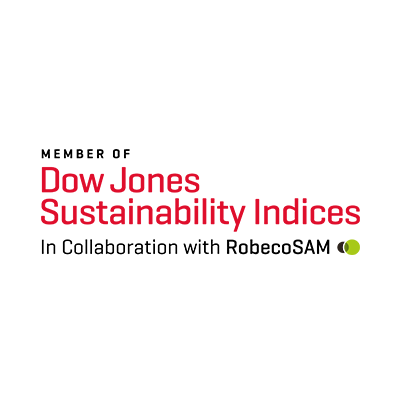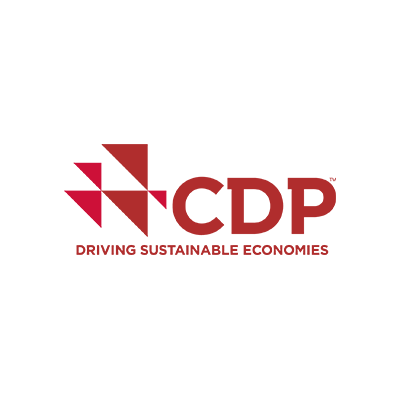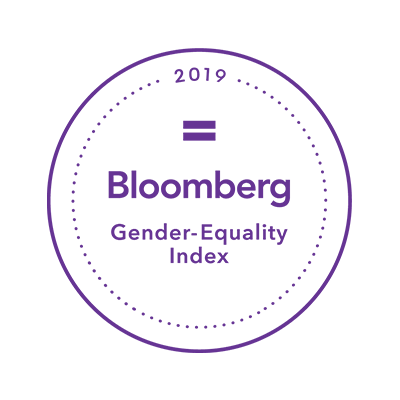Environmental, Social and Governance
TransCanada strives to be a leader in the delivery of energy in a safe, responsible and sustainable manner, ensuring we are positioned to maximize long-term value creation.
Being a leader also means listening to our stakeholders and communicating candidly about our performance and approach. We provide comprehensive disclosure on our environmental, social and governance (ESG) management.
For information and answers to frequently asked questions on ESG topics, please click on the subjects below:

Corporate Governance
Corporate Governance
The board and the members of TransCanada's management are committed to the highest standards of corporate governance. The board has formally adopted and published a set of Corporate Governance Guidelines, which affirm TransCanada's commitment to maintaining a high standard of corporate governance. The guidelines address the structure and composition of the board and its committees and also provide guidance to both the board and management in clarifying their respective responsibilities.
More information:

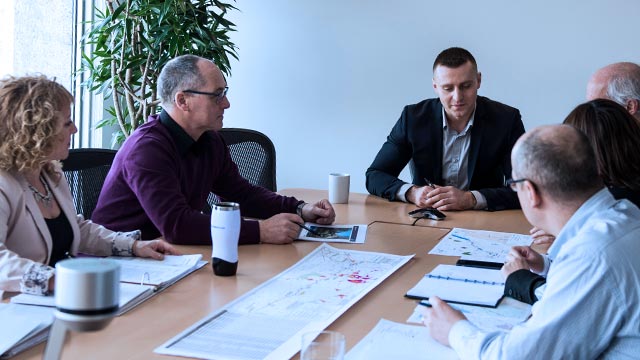
Risk Management
Risk Management
Risk management is integral to the successful operation of our business. Our strategy is to ensure that our risks and related exposures are in line with our business objectives and risk tolerance. We manage risk through a centralized assessment process that identifies and allows us to qualify risk that could materially impact our strategic objectives. Our Board of Directors’ Governance Committee oversees our risk management activities while our executive leadership team is accountable for developing and implementing risk management plans and actions.
More information:

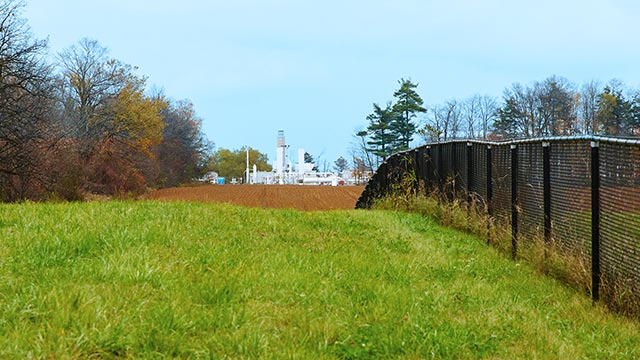
Environmental Protection
Environmental Protection
We respect the diversity of the landscapes where we operate and work to minimize our environmental footprint while meeting the world’s growing demand for energy. We are always working to reduce our land disturbance, carbon intensity, energy consumption, and water use throughout the entire life cycle of our assets.
More information:


Climate Change
Climate Change
TransCanada is well positioned to manage the risks and realize the opportunities related to climate change and the transition to a lower carbon economy. We continue to play a key role in developing a sustainable energy future through our investment in new pipeline infrastructure, as well as low-carbon and emission-less power generation. As the tools available to assess the risks and opportunities associated with climate change improve, we are utilizing them in order to increase the rigour of our assessment, as a key input into our strategic planning process. In 2019, TransCanada will be releasing additional disclosure on its climate change strategy and the company’s future in a low-carbon environment.
More information:

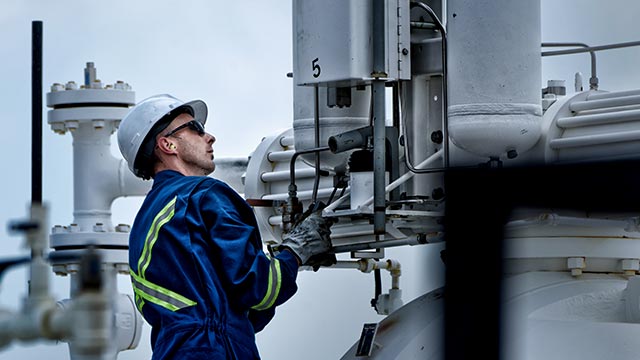
Safety
Safety
Delivering energy safely is our top priority. Our goal is to ensure that the public, our employees and the environment are not affected by an incident involving our assets. We believe that no safety-related incidents are acceptable and continue to work towards our goal of zero incidents.
More information:


Stakeholder Engagement
Stakeholder Engagement
We are committed to listening to our neighbours and working with our stakeholders to develop better project plans and create long-term opportunities and economic benefits in the communities where we operate. Our approach to engagement with stakeholders who may be affected by our activities is rooted in our core values of safety, integrity, responsibility and collaboration.
More information:

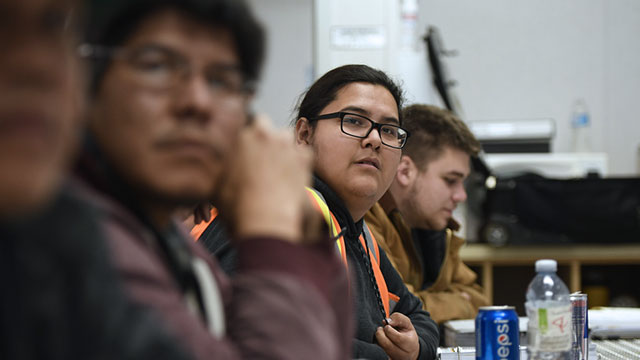
Indigenous Relations
Indigenous Relations
TransCanada has a long history and extensive experience engaging with Indigenous groups across North America. We recognize Indigenous groups as rights holders who have a distinct relationship to the land, and we strive to build co-operative, mutually beneficial and lasting relationships through considerate engagement with Indigenous groups on whose traditional lands we work.
More information:

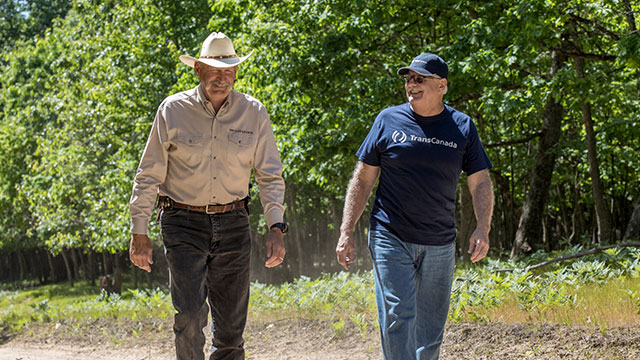
Working with Landowners
Working with Landowners
We build, operate and maintain assets that last generations, so we approach our relationships with landowners with the long term in mind. We continue to build and maintain relationships with close to 100,000 landowners across Canada, the United States and Mexico and know that these stakeholders are critical to our success.
More information:

Frequently Asked Questions
We build risk assessments into our decision-making process at all levels, including listening to our stakeholders’ concerns and collaborating with our industry peers.
E&S risk management is included in the risk management element of TransCanada’s Operational Management System (TOMS), which provides the framework for how our assets are designed, constructed, operated and decommissioned to ensure the safety, security and protection of our people, property, physical assets and the environment.
TOMS outlines TransCanada’s risk management process that requires the development of project-specific risk management plans that quantify and address risks in the areas of safety, customer impact, regulatory/compliance, environment, public perception, quality of life, and direct financial risk.
Our Board of Directors’ and its committees oversee our risk management activities, which includes ensuring appropriate management systems are in place to manage our risks, and oversight of our risk management policies, programs and practices. Each committee of the Board is also involved in risk oversight in their respective areas to ensure a robust risk management process with appropriate expertise, attention and diligence given to each key business risk. For example, The Health, Safety and Environment (HSE) Committee of the Board oversees operational, safety and environmental risk, and monitors compliance with our HSE programs through regular reporting from management.
For more information, please visit the Risk and Risk Management section of our Annual Report and the Risk Oversight and Committee Responsibilities section of the 2018 Management Information Circular.
TOMS is modelled after international standards such as ISO 14001 and OHSAS 18001, conforms to external industry consensus standards and voluntary programs, and complies with applicable legislative requirements. TOMS complies with the National Energy Board (NEB) Onshore Pipeline Regulations Section 6, which provides prescriptive requirements on establishing, implementing and maintaining a management system. TOMS is subject to regulatory audits against these management system requirements, with the most recent audit undertaken by the NEB in 2017. Similar legislation has also been established in Mexico where TOMS will be subject to external verification in the future.
Historically, Tier 4 (third-party) audits were conducted on TransCanada’s HSE management system on a three-year frequency, with the most recent audit conducted in 2017. The former HSE management system has been integrated into TOMS and going forward the HSE programs within TOMS will continue to be subject to Tier 4 audits on a three-year frequency.
TransCanada has an internal, multi-disciplinary team that continuously refines the company's strategy for managing climate change risks and opportunities. This group is responsible for monitoring, assessing and communicating the climate change policy and regulatory context over the near, medium and long-term. Key business risks including climate change risks are provided to TransCanada’s Board at regular meetings and the Governance Committee, which oversees the company’s approach to risk.
TransCanada operates under a low-risk and enduring business model that maximizes the full-life value of our long-life assets and commercial positions through all points in the business cycle. While renewables are the fastest growing form of new power generation, respected authorities such as the International Energy Agency forecast that oil and natural gas will continue to be dominant energy sources and a vital part of the energy mix for decades to come. Our investment in balanced and sustainable energy systems, our current asset portfolio and our future growth plans all reflect the long-term supply and demand forecasts for all forms of energy.
TransCanada understands that shareholders and other stakeholders want more information about how the company is addressing the risks and opportunities to our business related to climate change. In response to a shareholder proposal which was supported by our Board and management at our 2018 Annual Meeting of Shareholders, we are planning to provide additional disclosure in our inaugural report on sustainability and climate change that will be released at our next Annual and Special Meeting of Shareholders on May 3, 2019. The report will include discussion of our 2018 strategic planning cycle, which included analysis of the resilience of our portfolio under three long-term energy future scenarios and a fourth alternative 2 degrees Celsius case.
The regulatory review process for Keystone XL includes a comprehensive review of potential environmental and social impacts and risks, both direct and indirect. Prior to Keystone XL receiving its presidential permit on March 23, 2017, the U.S Department of State published its Final Supplementary Impact Statement in January 2014. Highlights of that report can be found at http://www.keystone-xl.com/kxl-101/quick-facts/.
The State Department’s full impact assessment all related documents are available on the department's Keystone XL Project website at https://keystonepipeline-xl.state.gov/.
The Keystone XL project review has also included state processes in both Nebraska and Montana. The applications and documents created throughout the review process can be found at the following websites:
Nebraska - http://www.psc.nebraska.gov/natgas/Keystone_Pipeline.html
Montana - http://deq.mt.gov/DEQAdmin/mfs/keystonexl/keystonexlcomprehensive
On September 17, 2018 the State Department announced that it will prepare a Supplemental Environmental Impact Statement (SEIS)—consistent with the National Environmental Policy Act (NEPA) of 1969—to analyze the potential environmental impacts of the Keystone XL Mainline Alternative Route that was approved by the Nebraska Public Service Commission in November 2017.
We do not expect that any supplemental environmental review will result in a delay of construction preparation activities or the actual construction activities anticipated to commence in 2019.
On July 5, 2018 the National Transportation Safety Board released the results of its joint investigation with the Pipelines and Hazardous Materials Safety Administration (PHMSA) into the cause of the incident. After detailed examination of the pipe, they determined that the pipeline failure was due to a crack that was most likely caused by damage to the pipe during construction.
On November 9, 2018 TransCanada submitted the final accident report to Pipeline and Hazardous Materials Safety Administration updating the volume of crude oil that was released during the incident. The final total is 276,864 gallons — a decrease of roughly 130,500 gallons that was originally reported — due to rapid detection of the leak, the control center's quick response to the incident, and the location of the failure near the top of the pipe.
We have closely analyzed the results of the third-party root cause investigation and have improved construction practices and oversight to prevent our pipelines from being damaged during construction and verified that similar issues are not present in other sections of Keystone and our other liquid pipeline systems.
The incident site has been completely cleaned up and restored to its normal condition. PHMSA closed the Corrective Action Order on January 29, 2019.
A core component of TransCanada’s ongoing engagement to develop long-term relationships with landowners and Indigenous communities in whose territory the company operates includes information sharing, identification of issues and efforts to address concerns. These efforts are in part, intended to avoid grievances through a proactive approach to mitigating potential grievances.
TransCanada’s preferred method for addressing the concerns of Indigenous groups and landowners is through direct and respectful discussion. Issues received or identified through ongoing engagement are systematically tracked and followed up on to promote resolution. In the event that resolution through this approach is not reached, we rely on existing regulatory and legal processes. Our goal is always to treat people fairly, using a principled approach.
TransCanada’s approach to working with Indigenous groups across all business lines and jurisdictions is informed by our Indigenous Relations Commitment Statement, Policy, Strategy, Guiding Principles, as well as legal and regulatory landscapes, which continue to evolve. We engage Indigenous groups throughout the planning, construction and operation of projects, including sharing information related to project and operational activities, engaging to determine interests in activities, and ongoing efforts to address the aspirations and concerns of Indigenous groups as they arise.
The Indigenous Relations group engages early with potentially affected Indigenous groups to understand their interests, identify opportunities, respond to concerns and facilitate participation in TransCanada’s business activities, including asset operation and maintenance. Participation may include contracting, training and employment opportunities, open houses, one-on-one and community meetings, site visits and written communications such as fact sheets, brochures, websites, email, and toll-free telephone lines.
Other important elements of our Indigenous Relations Program include:
- Scholarship Program: The TransCanada Indigenous Legacy Scholarship is offered on an annual basis to students from communities near TransCanada operations and business activities in Canada, the US, and Mexico.
- Community Legacy and Education and Training Initiatives: Throughout North America, our engagement team plays an important role in delivering our community legacy investment and education and training initiatives to Indigenous groups. We look to Indigenous groups to identify their needs and interests for these initiatives, which support community aspirations and provide opportunities for TransCanada to participate in community events.
- Engagement Leads and Regional Liaisons: Engagement Leads establish and strengthen relationships through the project phase of an asset, and TransCanada maintains a regional presence through the work of regional liaisons.
In Canada, the duty to consult always rests with the Crown, and is driven by the fiduciary obligations of the Crown to Indigenous people under treaty and under law. The duty arises whenever the Crown is making a decision that has a reasonable possibility of adversely affecting the exercise of Aboriginal and Treaty rights, as protected under s.35 of the Constitution Act, 1982. The nature of the duty to consult depends on the seriousness of the potential impact and the strength of the claim. It operates on a sliding scale, starting with providing simple notice of the activity (e.g. building a pipeline), and ending with “full consultation” which includes meeting with Indigenous communities to discuss avoidance, mitigation, management or accommodation of potential adverse project effects.
The Crown cannot delegate the duty to consult to industry, but it can decide to delegate procedural aspects to fulfil its duty, as proponents are often in the best position to address Indigenous groups’ concerns. TransCanada calls carrying out this delegated duty “engagement,” to distinguish it from consultation.
In the United States and Mexico, the government has not delegated procedural aspects of consultation to project proponents. The U.S. federal government handles all aspects of consultation, including determining which communities it will consult, defining consultation guidelines, and reaching agreements with communities when required. Project proponents are permitted to accompany the government or regulatory agency when they meet with Indigenous groups, but accountability for consultation remains with the government.
In Mexico, consultation with Indigenous groups is the responsibility of the federal government, and is led by the Secretaría de Energía (SENER).
TransCanada identifies Indigenous groups through a combination of desktop research, the company’s own operating experience, including past projects in the region, existing agreements with Indigenous groups, and an established network of contacts with Indigenous groups in the project area. TransCanada also considers the project’s proximity to Tribal reservations in the U.S., First Nation reserves in Canada, asserted traditional territory of Indigenous peoples and Indigenous settlements and communities. In addition, TransCanada engages with any Indigenous group that self-identifies as a potentially affected party to understand their interests, the nature of their concerns and to determine the most appropriate method of engagement going forward.
Canada, the U.S. and Mexico (the three countries within which TransCanada operates) have distinct laws pertaining to the protection of Indigenous rights and interests, as identified in Article 32.3 of the United Nations Declaration on the Rights of Indigenous Peoples (UNDRIP). Where TransCanada’s business activities have the potential to affect local Indigenous groups, our practice is to engage with these groups to understand their issues and concerns, and ensure we take reasonable steps to mitigate those concerns. By taking this approach, we adhere to and often exceed the regulatory requirements of the respective jurisdictions.
TransCanada complies with the laws and regulations of the countries in which it operates. Our operations are limited to Canada, the U.S. and Mexico, and each country’s legal requirements for Indigenous engagement are outlined below:
- Mexico is a signatory to the ILO 169, has ratified UNDRIP and Article 120 of the Hydrocarbon Law which establishes a duty for SENER to obtain free, prior and informed consent (FPIC) for Indigenous people.
- The United States has endorsed UNDRIP and TransCanada continues to monitor how this may be incorporated into legislation and policy. Under the current legislation, TransCanada will continue to engage to the greatest extent possible, while respecting the federal government’s role and responsibilities in Indigenous consultation.
- The Government of Canada has ratified UNDRIP. Currently Bill C-262, an act to ensure the laws of Canada are in harmony with UNDRIP, is going through the legislative process and is expected to become law. The Government of Canada has stated that FPIC, as it is interpreted in the Canadian constitutional context, is not interpreted as a veto by Indigenous groups.
Regardless of what region we operate in, TransCanada endeavours to reach consent on our projects among Indigenous groups through early and ongoing engagement. We also strive to avoid and mitigate project-related effects on the exercise of Indigenous rights through environmental assessment and project planning.
Notwithstanding the variation in our jurisdictions, Indigenous Relations practice in TransCanada is based on a common Commitment Statement and Policy, which are flexible for the jurisdictions but are consistent and based in TransCanada’s corporate values. We also have a common Indigenous Relations Program and Strategy, articulating how we approach all engagement. These commitments, policies, programs and strategies underpin our approach, rather than solely compliance with local law.
Each country in which we operate has unique requirements for ensuring projects mitigate adverse effects to Indigenous groups. However, our approach is based on a Commitment Statement, Policy, Strategy and Program that require us to both follow the law and conduct studies of traditional knowledge, cultural resources, and archeological assessments, with a goal of ensuring that any effects on the exercise of Indigenous rights are mitigated throughout the project planning process. Further, TransCanada engages with Indigenous groups potentially affected by the Company’s business activities, adhering to and often exceeding the regulatory requirements of the respective jurisdictions.
The TransCanada Operational Management System (TOMS) provides direction to establish and maintain performance monitoring to support the Corporate Strategy and competitiveness of TransCanada. The Indigenous Relations program establishes goals, objectives and targets in accordance with corporate guidance. Performance monitoring is one means by which the Indigenous Relations Program assesses its effectiveness and guides continuous improvement. Indigenous Relations also monitors, manages and evaluates Indigenous Relations program performance through an annual management review.
The Indigenous Relations program bases its performance indicators on factors including the Indigenous Relations Strategy, Guiding Principles, operational controls, employee and contractor training and regulatory outcomes.
The Board receives verbal and written reports regularly from management on various significant matters related to its operations and development and construction of projects throughout all of its business lines and geographies. These reports have included notification of, and updates on, matters related to Indigenous rights and relations including presentations on TransCanada’s approach with Indigenous communities. For instance, with respect to the Coastal GasLink project, the Board has received regular written and verbal reports regarding the status of the company’s relationships and agreements with First Nations and Indigenous communities along the route.
Indigenous relations experience or training is not specifically identified as criteria when identifying suitable director candidates, but could fall into the broader set of skills and expertise categories that the Governance Committee considers when discussing Board renewal.
TransCanada’s Indigenous cultural awareness program is delivered in three modules comprising a region-specific historical overview, a synopsis of how the Indigenous Relations program is implemented within the company and a hands-on cultural experience which is offered regularly to all staff and in-house contractors. These sessions cover TransCanada’s Commitment Statement, Policy and engagement requirements, helping participants acquire the knowledge and skills needed to engage with Indigenous groups.
At TransCanada corporate offices in 2018, 156 employees and in-house contractors participated in Indigenous awareness training sessions specific to their country. In addition, 475 employees and in-house contractors participated in the many events and activities connected to Indigenous Awareness Week in Canada and Native American Heritage Month in the U.S. These sessions focused on specific aspects of local Indigenous history and culture, as well as current concerns and issues facing Indigenous groups.
Project-specific cultural awareness training is also an important element of our Indigenous Relations program. This includes development of a construction orientation module for all personnel, to ensure safe and respectful conduct in all work. These orientations include all facets of interaction, including safety, environment, and cultural awareness.
TransCanada’s approach to Indigenous Relations includes information sharing, identification of issues, and efforts to address concerns. While these proactive efforts are in part intended to avoid grievances, we have a defined process for addressing complaints and grievances that involves the following steps:
- Receive and Record: If the complaint is readily resolvable, actions to address the issue are taken and details are recorded in our engagement tracking tool.
- Assign: The complaint / grievance is assessed and assigned to the appropriate TransCanada personnel for further action or review. A timeline for review and follow-up action is established.
- Acknowledge: After review, the assignee contacts the complainant to confirm the complaint, and records the discussion.
- Follow-up: The basis of the complaint is reviewed; findings are documented and options for resolution of the issue are proposed.
- Response: Proposed solution and timelines, seeking feedback from the complainant
- Resolution: Upon acceptance of the resolution, TransCanada implements the agreed upon actions.
- Close Out: A complaint is closed out when no further action can be or needs to be taken.
We measure the effectiveness of our engagement approach by tracking and responding to all issues and concerns raised by stakeholder groups and Indigenous groups with which we engage.
While TransCanada does not use agreements as a measure of success in Indigenous engagement, we do enter agreements with Indigenous groups who may potentially be affected by our projects. In 2018, we entered into a total of 127 agreements with the 44 Indigenous groups we were engaged with on 16 projects we had under development.
TransCanada makes every effort to track the overall percentage of Indigenous employment; however, this information is based on self-identification and therefore contingent on the information provided. TransCanada strives to build a workforce that is representative of the demographic profile in which we operate.
TransCanada strives to maximize opportunities for qualified, competitive Indigenous suppliers with the capacity to support our projects and operations. Through education and training and community legacy initiatives, we provide training and experience that help to build individual and community capacity to supply the goods and services that the Company requires.
For many of our capital projects, the greatest percentage of spend goes toward procuring high-value items, such as line pipe, turbines, metering equipment, and sophisticated control systems. Many of these items must comply with stringent quality and safety standards, as mandated by regulations and industry best practices. TransCanada leverages a global supply chain to source these high-value, technically-complex items, which skews our spend profile toward international suppliers. Due to the capital-intensive nature of our business, the goods and services provided by local suppliers and contractors, including those from Indigenous communities, tend to account for a small percentage of our projects. As a result, comparing total capital spend with spend with Indigenous suppliers does not reflect the true impact of contracting activities in local Indigenous communities.
TransCanada does not have specific targets for Indigenous spend, as each project and Indigenous community has unique attributes, needs and capacity. The communities in which our projects are built or our assets operate continue to evolve and change, as does their capacity to supply goods and services to our projects and operations. As such, TransCanada works with each community to understand local business capacity and priorities, and matches this to project requirements, depending on the size and type of project (natural gas, liquids or energy), and its specific needs.
Coastal GasLink has the utmost respect for the First Nations system in British Columbia, whether that be elected or hereditary. It is out of this respect that we never made assumptions about who has decision-making authority. Instead, we strived to engage with all the Indigenous groups along the pipeline route—regardless of history or background—to ensure they’ve had opportunities to be part of our project planning process.
Since the project began in 2012, the Coastal GasLink team has engaged in a wide range of consultation activities with the Office of the Wet’suwet’en and directly with Wet’suwet’en Hereditary Chiefs. In fact, more than 1,300 phone calls and emails have occurred to discuss the project over the past six years, including approximately 120 in-person meetings specifically with Wet’suwet’en Hereditary Chiefs.
Coastal GasLink is proud of the relationships it has built over the past seven years. We appreciate the strong support we have received from Indigenous groups during this process, including through all 20 project and community agreements that have been reached with the elected Indigenous bands along the project route. For more information, visit the Coastal Gaslink website: www.coastalgaslink.com
TransCanada is actively engaging 25 Tribal Nations in the United States and seven Indigenous groups in Canada. Our approach to working with these groups is informed by TransCanada’s Indigenous Relations Commitment Statement, Policy, Strategy, and Guiding Principles, as well as the legal and regulatory requirements of the respective jurisdictions traversed by the project.
In Canada and the United States, TransCanada continues to engage with interested Indigenous groups to understand their interests, share information, respond to concerns, and to work together to identify opportunities for project participation. We also introduce Indigenous groups to initiatives such as community legacy /investment, education and training, contracting and employment (business engagement) through which TransCanada creates opportunities for Indigenous groups to benefit from the project. Through business engagement TransCanada collaborates closely with Indigenous groups to identify capable and qualified Indigenous businesses and peoples to ensure they have opportunities to participate in the economic benefits of the project through contracting and employment activities.
In Canada and the United States, some Indigenous groups have expressed concerns regarding water crossings, spill response, pipeline safety, as well as the protection of traditional knowledge sites and cultural properties of significance. TransCanada continues to share information regarding areas of concern, and to meet with Indigenous groups to gain a better understanding of their concerns and proposed solutions. We have used a variety of methods to address questions and create greater awareness and understanding of the project and how TransCanada does its work. We have conducted pump station and workforce camp tours, held a Pipeline 101 (including construction methods, environmental management, safety, and operations) workshop for Elders, reviewed emergency and spill response plans, shared videos explaining the various methods we use for water crossings, and discussed water management mitigations.
Work has been halted on the central segment of the project as we await the completion of Indigenous consultation by the federal government. Consultation with Indigenous groups in Mexico is the responsibility of the federal government led by Secretariat of Energy (SENER). We continue to engage with Indigenous groups in accordance with the SENER process and Mexican legislation.
In the meantime, Mexico’s state-owned electric utility, the CFE, recognizes the project’s delay as a force majeure event and we have been receiving fixed capacity charges for the pipeline since the first quarter of 2018, as per the terms of our contract with the CFE. We have revised the expected completion date for the project to the end of 2020.
TransCanada’s infrastructure projects do not require relocation of Indigenous communities or persons.
Awards and Recognition
Visit our Awards and Recognition page to learn more about the recognition we have received from respected third-party agencies.

